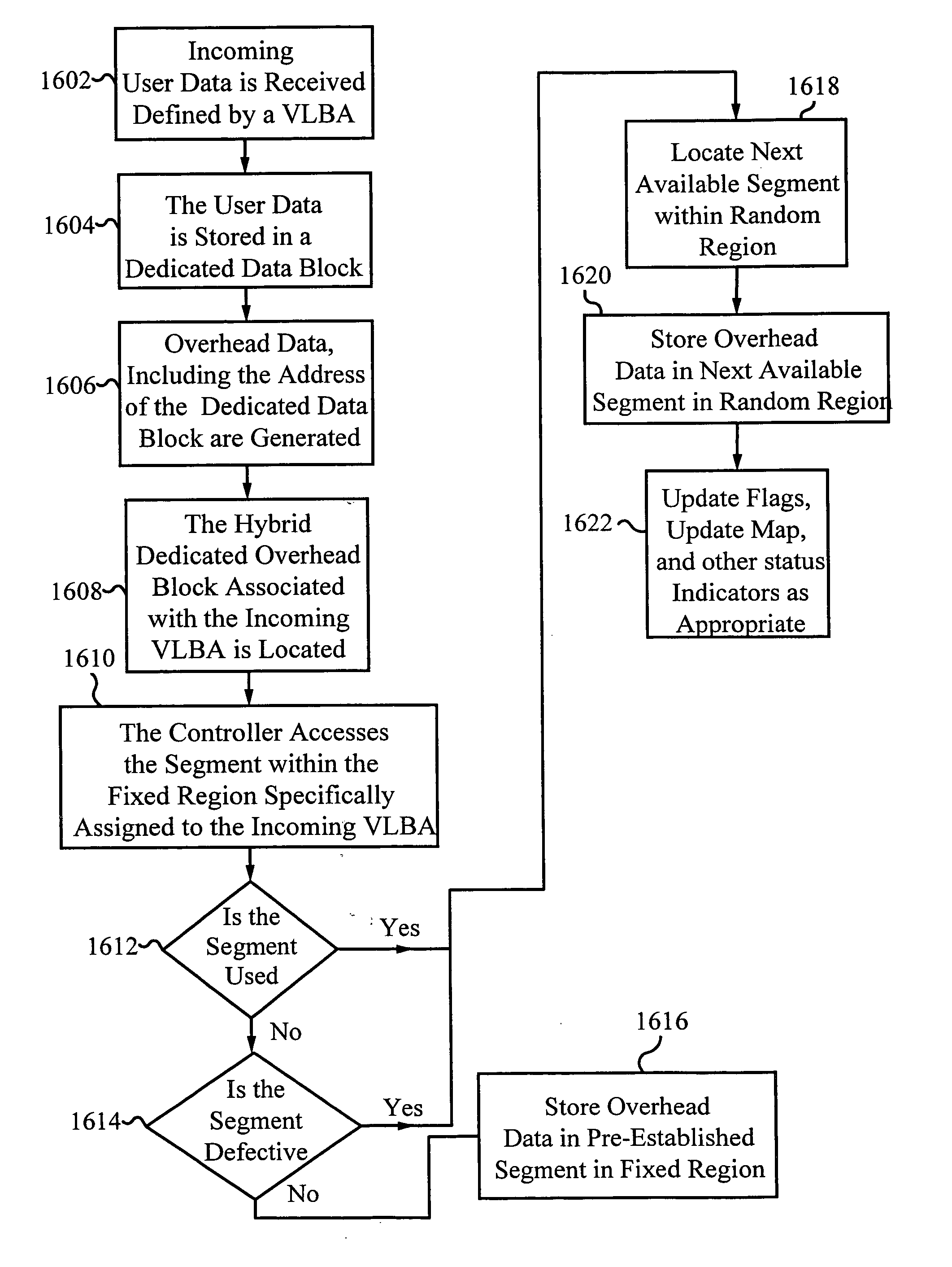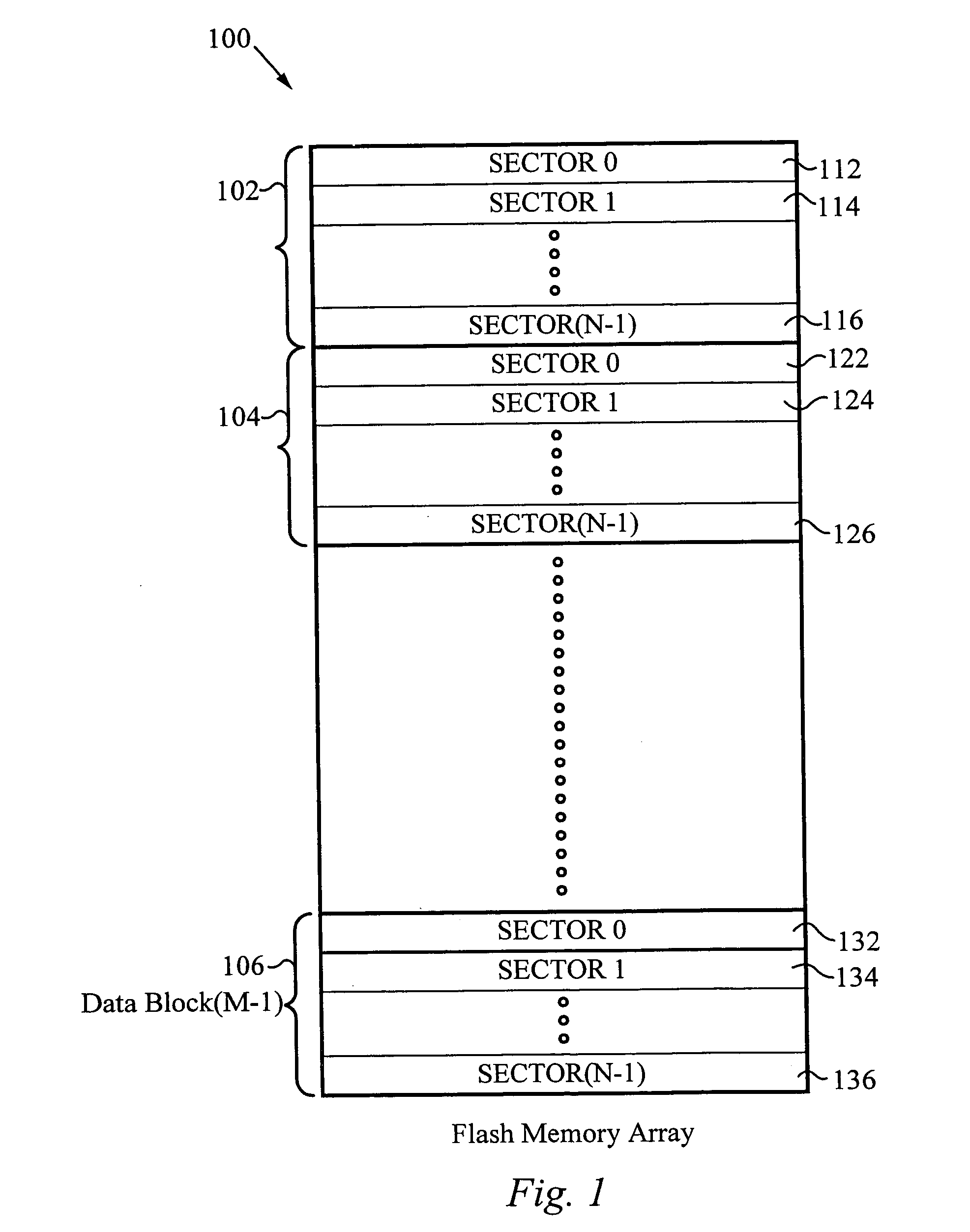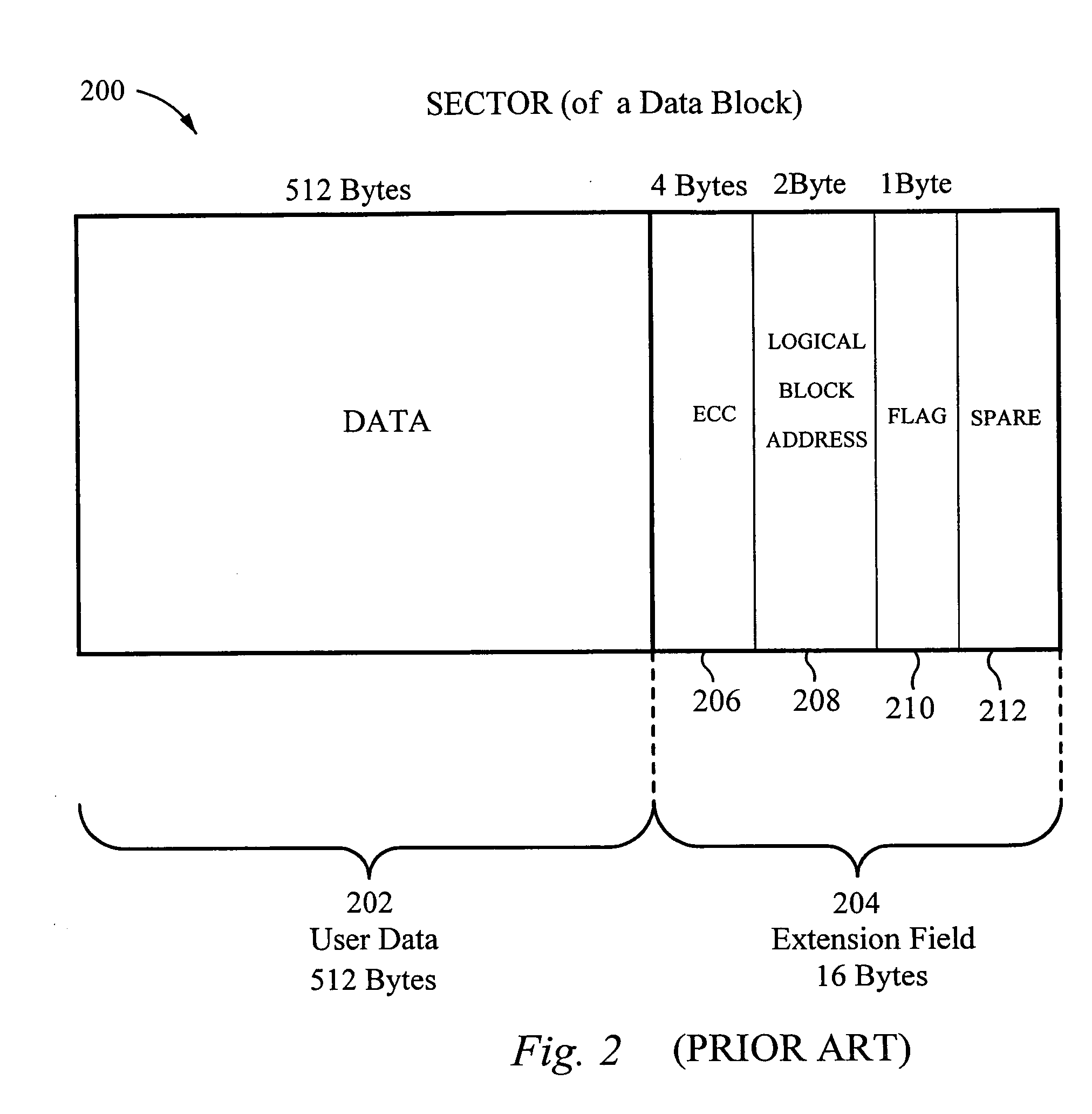Flash memory architecture with separate storage of overhead and user data
a flash memory and overhead technology, applied in the field of flash memory systems, can solve the problems of consuming a significant amount of power, reducing the susceptibility of hard disk drives and floppy disk drives to failure, and reducing so as to reduce the amount of memory consumed by dedicated overhead functions, the effect of efficient use of overhead memory
- Summary
- Abstract
- Description
- Claims
- Application Information
AI Technical Summary
Benefits of technology
Problems solved by technology
Method used
Image
Examples
Embodiment Construction
[0068] The embodiments recited herein are neither intended to limit the scope of the invention, nor to exhaust every possible variation or nuance of the described invention. Minor variations of the disclosed invention will immediately become apparent to those skilled in the art. In particular, numerous illustrations are made with respect to data storage architecture, and the fields and registers within a Flash Memory Unit. The descriptive terms such as Dedicated Overhead Blocks, Overhead Pages, Overhead Segments, Super Overhead Fields and other architectural components are arbitrary term used to illustrate the architecture, data storage fields and registers of the present invention. Equivalent structures or architectures may be designed using any variety of architectural terms. Similarly, the relative storage capacities of various data storage fields are not intended to limit the present invention to the particular embodiment illustrated. Neither are the number of component memory f...
PUM
 Login to View More
Login to View More Abstract
Description
Claims
Application Information
 Login to View More
Login to View More - R&D
- Intellectual Property
- Life Sciences
- Materials
- Tech Scout
- Unparalleled Data Quality
- Higher Quality Content
- 60% Fewer Hallucinations
Browse by: Latest US Patents, China's latest patents, Technical Efficacy Thesaurus, Application Domain, Technology Topic, Popular Technical Reports.
© 2025 PatSnap. All rights reserved.Legal|Privacy policy|Modern Slavery Act Transparency Statement|Sitemap|About US| Contact US: help@patsnap.com



